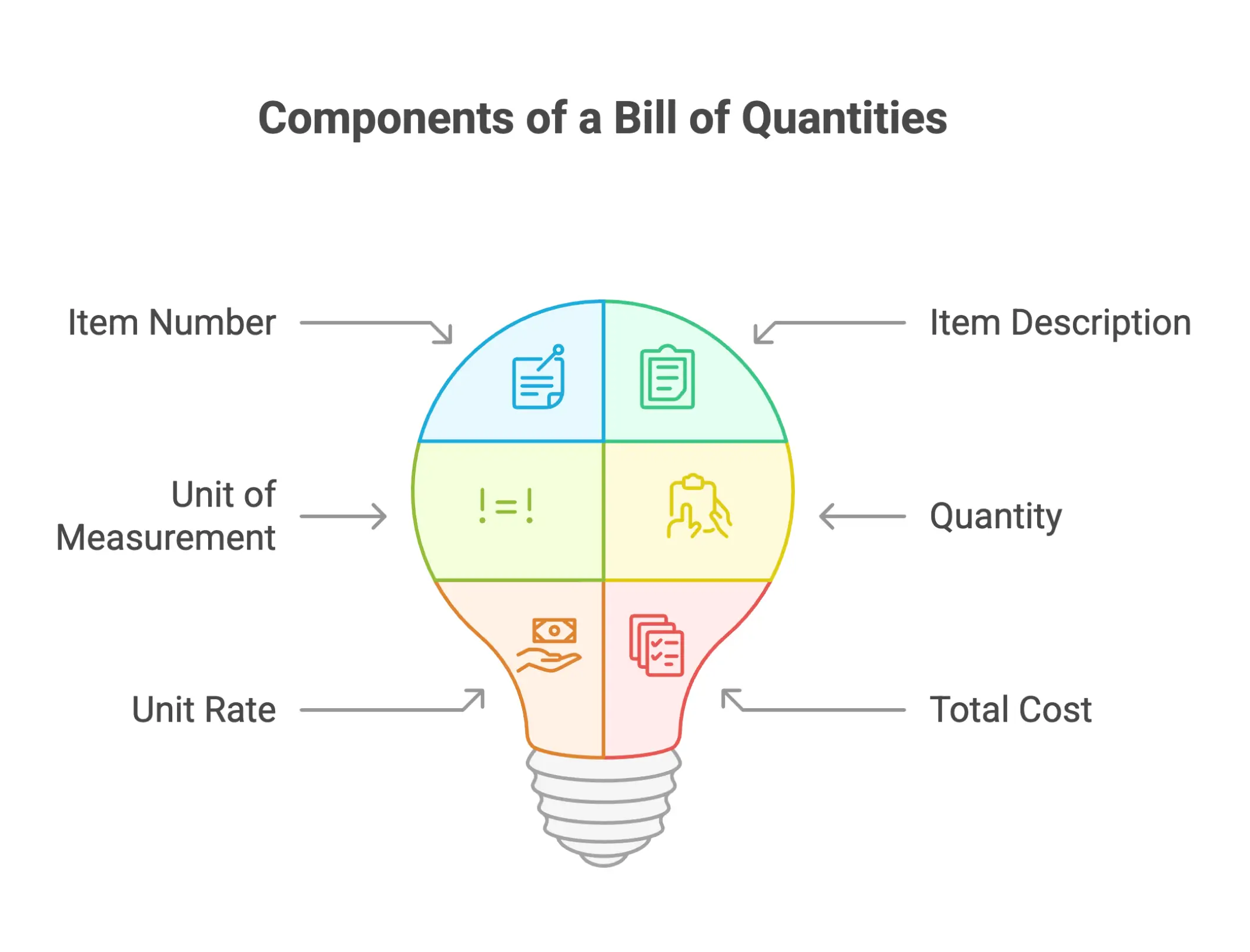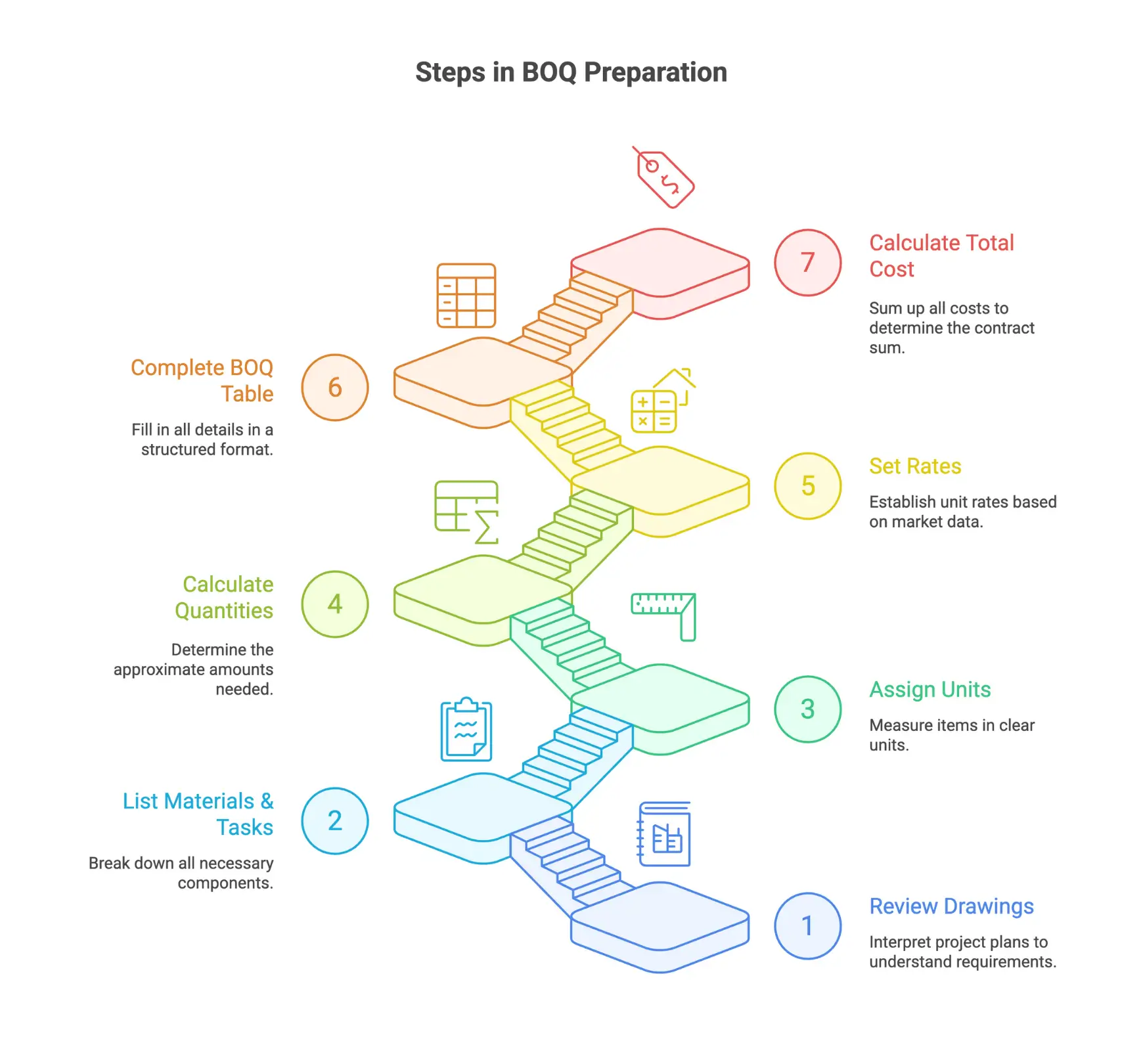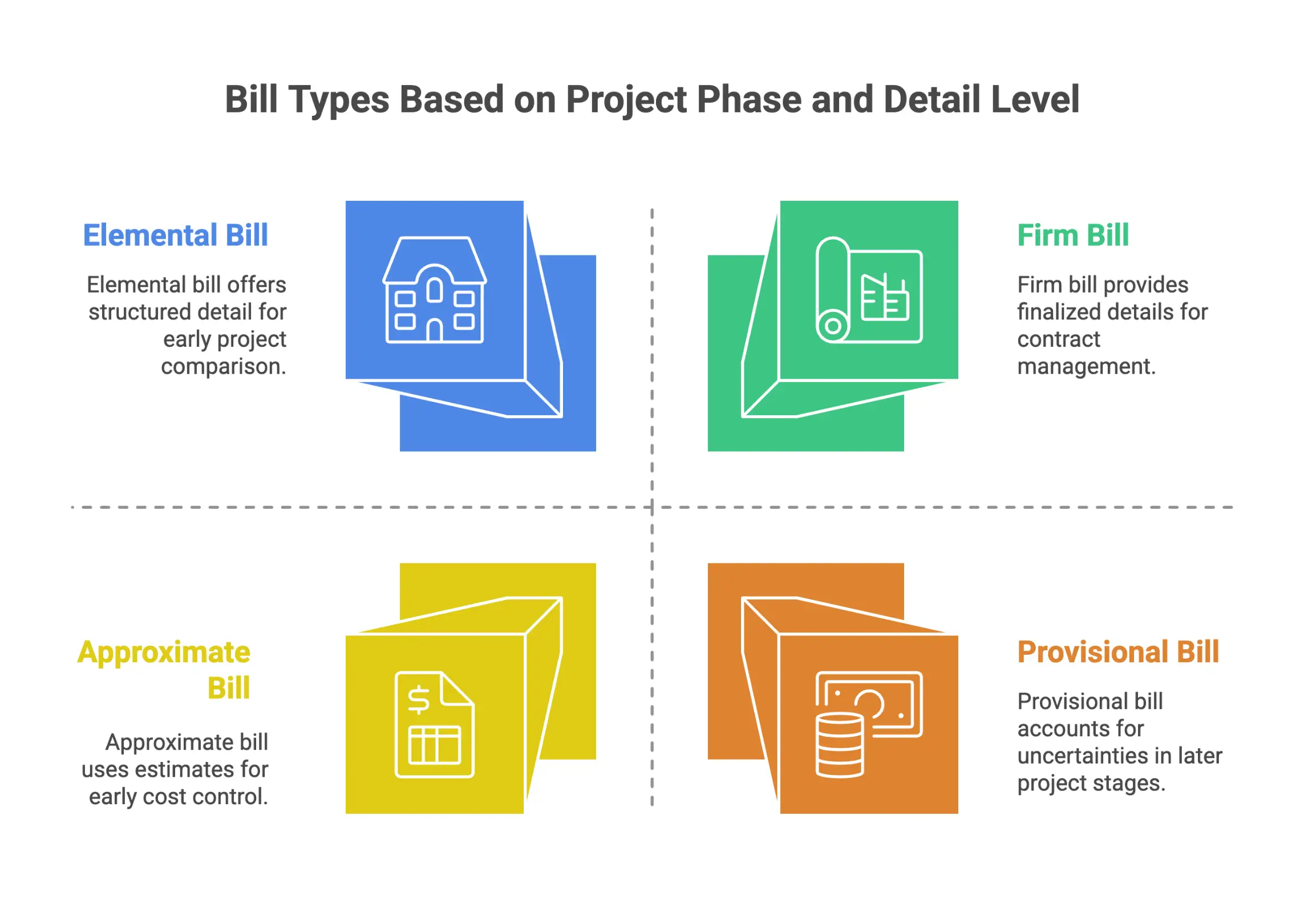

What Is a Bill of Quantities? Guide for Accurate Construction Costing
TL;DR: A Bill of Quantities (BOQ) is a document listing all the materials, labor, and services required for a construction project. The BOQ acts as a foundational document throughout a construction project’s lifecycle, serving as the essential benchmark for cost estimation, bidding, project monitoring, scheduling, and contract management. This guide explains how a BOQ is built, its vital role for project owners and contractors, the difference from similar documents, and how digital tools are transforming its creation process.
Introduction to Bill of Quantities in Construction Projects
Have you ever been in the middle of building projects where the budget keeps ballooning, schedules go off track, and the scope becomes a moving target? You're not alone. Many project owners and construction teams find themselves stuck with budgets that don't match reality, unclear project scope, and constant uncertainty about tracking progress or managing project costs. This confusion can put entire construction projects in jeopardy.
Modern construction projects are fast-paced, involving many moving parts and complex project requirements. Relying on scattered spreadsheets and outdated documentation can lead to inaccurate cost estimates, miscommunication, and costly delays. For successful construction projects, accurate cost estimation, cost control, and clear scope definitions are non-negotiable.
The solution? The Bill of Quantities. By switching to structured, detailed documentation, especially when integrated with software solutions, teams can monitor all the components and associated costs, improving procurement, project planning, and cost control from start to finish. Mastering the BOQ creation process brings construction projects back under control, sharpens bids, and ensures budgets meet project outcomes.
What Is a Bill of Quantities (BOQ)?
A Bill of Quantities (BOQ) is the backbone of cost management for construction projects. It’s a detailed breakdown, typically in tabular format, of all materials, labor, and services required, along with measurement units, quantities, unit rates, item numbers, and total cost for each component. The main objective of the BOQ is to define project scope, specify same quantities for bidding contractors, and provide a reliable foundation for accurate cost estimation throughout the project lifecycle.
A BOQ typically includes columns for:
- Item number (unique identifier for each task or item)
- Item description
- Unit of measurement
- Quantity
- Unit rate
- Total cost

The total cost for each line item is calculated by multiplying the quantity by the rate. These details ensure that project owners, contractors, and procurement teams work from the same information, minimizing manual errors and enabling effective contract management.
As Jones Melling explains, the BOQ isn't just about listing all the materials; it also specifies standards, performance requirements, labor, and services, creating a comprehensive scope for the construction phases. By covering project scope at this level of detail, the BOQ becomes an essential document in the tendering process and project execution.
Bill of Quantities and the Creation Process
Who Prepares the BOQ?
The BOQ creation process requires a keen understanding of construction industry best practices and accurate measurement techniques. Typically, a quantity surveyor or cost consultant who may also serve as contract administrator works alongside the design team and project owners to:
- Interpret architectural plans and engineering drawings
- Prepare a quantities template
- Ensure adherence to recognized measurement units and standards
- Check for completeness and transparency
For complex projects or infrastructure projects, the expertise of a qualified quantity surveyor is vital to track project costs, reduce risk, and ensure no scope items are overlooked. Their attention to detail, knowledge of raw materials, and understanding of overhead costs help achieve accurate cost estimation, risk management, and effective project planning.
Steps in BOQ Preparation
- Review Project Drawings: The design team and quantity surveyor interpret project drawings and architectural plans to clarify requirements.
- List All the Materials and Tasks: A detailed breakdown includes all the components needed, such as materials, labor, services, site preparation, and equipment.
- Assign Measurement Units: Every item is measured in clear units (square meters, tons, hours, etc.).
- Calculate Quantities: The surveyor determines the approximate quantities needed for each item.
- Set Rates: Unit rates are established based on the latest market information, project scale, and contract terms.
- Complete the BOQ Table: Item descriptions, quantities, measurement units, rates, and item numbers are filled in.
- Calculate Total Cost: For each row, multiply quantity by rate for a line total and sum up for contract sum.

Each step must align with the project's requirements and contract administrator checks, ensuring transparency, accuracy, and easy comparison during the bidding process.
Types of Bills: Elemental, Approximate, Provisional & More
BOQs are not one-size-fits-all. You might encounter several types, based on the project's needs and the phase of construction:
Elemental Bill
The elemental bill organizes work by elements (e.g., substructure, superstructure), making it easier to compare different building projects and manage cost control.
Approximate Bill
An approximate bill is prepared early in the project lifecycle when design details are limited. It uses best estimates rather than finalized measurements to allow early cost estimation and preliminary budget control.
Provisional Bill
A provisional bill includes items or quantities not fully defined at the outset, often for areas subject to change or further clarification. These are priced provisionally and adjusted as the project progresses.
Firm Bill and Revised Bill
A firm bill reflects finalized quantities and specifications for contract management. A revised bill is produced when substantial changes arise during construction.

BOQ Components and Structure: The Detailed Breakdown
A well-structured BOQ ensures all stakeholders, including general contractors, procurement teams, and project owners, can manage bids, track project progress, and maintain cost control throughout the project schedule.
Typical BOQ Table Structure
- Item number: Unique identifier
- Description: All the components and associated tasks
- Measurement unit: e.g., m3, kg, hours
- Quantity: Carefully calculated from project drawings
- Rate: Price per unit (based on market rates and contract terms)
- Total cost: Quantity × Rate
Why Is a Bill of Quantities Important in Construction Projects?
A Bill of Quantities is more than paperwork. It is the essential document for cost control, accurate cost estimation, and streamlined project management. Here’s why the BOQ is indispensable for successful construction projects:
Ensuring Cost Control and Accurate Cost Estimation
- Acts as a financial baseline for project owners, contractors, and contract administrators
- Defines the contract sum and scope for bidding contractors on the same work
- Allows for effective project budgeting, proactive cost monitoring, and timely adjustments
- Provides evidence for interim payments, variations, and final account settlements
Combining the BOQ with the project schedule helps stakeholders create a cost schedule, anticipate cash flow needs, and forecast the construction period. This coordination helps avoid costly delays and overspending.
Supporting Project Owners and Stakeholder Alignment
- Project owners control the bidding process by specifying the same quantities and work for all contractors
- Facilitates easier comparison of bid packages, promoting transparency and competitive procurement
- Reduces miscommunication, as the BOQ defines expectations and work completed at each stage
- Supports project managers in managing costs, contract administration, and tracking progress throughout construction
For building projects, this level of detail ensures all parties stay focused on project goals, avoid scope creep, and maintain clarity over project outcomes.
The Lifecycle of a BOQ: From Bidding to Project Completion
A Bill of Quantities follows every construction project across the entire project lifecycle.
During the Tendering Process
- Used by project owners to invite competitive bids from general contractors
- Ensures all bidding contractors price the same information (quantities, specifications, project scope)
- Enhances transparency and consistency in awarding contracts
Project Execution and Monitoring
- Guides procurement teams on ordering materials needed for each construction phase
- Used by contract administrators to monitor costs, approve payments based on work completed, and manage contract variations
- Helps project managers track project progress, measure actual spend against the contract sum, and anticipate cash flow needs
Benchmarking and Learning
- Post-project, the detailed BOQ serves as a benchmark for future cost estimation and risk management in similar construction projects
- Allows analysis of where previous cost estimates diverged from reality, enhancing profit margins and long-term cost control
- Builds a digital library for project planning, cash flow forecasting, and improved decision-making in future projects

BOQ vs. Bill of Materials (BOM) and Other Cost Documents
Key Differences for Construction Industry Professionals
Understanding whether your project requires a BOQ or BOM is critical for accurate cost estimation and successful project outcomes. Tools with BIM/GIS takeoff features can help bridge these documents for complex projects and infrastructure projects, improving cost control and management.
The Role of Technology and Digital Tools in BOQ Preparation
Advantages of Software Solutions for BOQ Preparation
- Speed: Automation reduces manual errors, cuts prep time, and keeps the whole team (owners, design teams, general contractors) on the same page
- Flexibility: Real-time updates reflect design changes, supply chain fluctuations, or changes to the construction period
- Collaboration: Multi-user access supports complex projects with stakeholders in different locations
Scenario modeling, digital benchmarking, and cloud-based backups make BOQs living documents that evolve as the project progresses. Integrating BOQs with digital tracking tools also helps manage costs, measure completed work, forecast billing cycles, and protect profit margins.
Frequently Asked Questions About Bill of Quantities
What is included in a Bill of Quantities?
A detailed BOQ contains all the materials, labor tasks, services, measurement units, quantities, rates, and total cost for each line item of a construction project. The BOQ serves as the foundation for contract sum, cost estimation, and payment procedures.
Who is responsible for preparing the BOQ?
A qualified quantity surveyor or cost consultant, often working with the design team and contract administrator, prepares the BOQ. Their expertise ensures that measurement units, quantities, and costs are accurate and transparent.
How does a BOQ differ from a Bill of Materials?
The BOQ is used for construction projects to include labor, materials, and services for bidding and project control. In contrast, a Bill of Materials (BOM) is focused on raw materials and assemblies for manufacturing.
Why is a BOQ crucial for cost control and project monitoring?
The BOQ enables tight cost control and transparency. Project managers and owners can monitor costs against contract estimates, forecast cash flow, and anticipate project schedule needs across the construction phases.
How has technology improved BOQ preparation?
Modern software solutions for BOQ preparation have minimized manual errors, streamlined updates, enabled accurate cost estimation, reduced costly delays, and supported digital benchmarking, making the BOQ more valuable throughout the project lifecycle.
Real-World Uses and Benefits of the BOQ for Project Owners and Stakeholders
- Allows project owners to control bidding and compare contractor proposals based on the same scope and quantities
- Serves as a cost estimation tool for both project owners and contractors, clarifying the project's financial requirements
- Improves planning and scheduling by supplying comprehensive data about materials needed and labor required for project execution
- Aids in tracking progress, work completed, and managing payments throughout the billing cycle of construction projects
- Facilitates contract management by providing clear evidence for interim payments, variations, and final account settlements
- Reduces disputes and costly delays through detailed definition of project scope, expectations, and associated costs
Conclusion: BOQ as the Essential Document for Successful Construction Projects
A Bill of Quantities (BOQ) is much more than an administrative checklist. It is the essential document that underpins cost control, project planning, contract management, and stakeholder alignment from design to project completion.
Key Takeaways
- For Project Owners: Provides transparency, comparability, and cost control throughout all construction phases
- For Contractors and Procurement Teams: Sets clear benchmarks for bidding, purchasing, and tracking progress
- For the Whole Project Lifecycle: A living tool for monitoring project costs, scheduling, and risk management, all the way to the final account
Today’s construction industry relies on digital tools and software solutions to create, manage, and leverage detailed BOQs, supporting project outcomes and profit margins even on the most complex projects.
Ready to Improve Your Cost Estimation and BOQ Preparation?
Curious about leveling up your BOQ preparation or construction cost estimation workflow? Explore Nomitech’s full suite or get in touch to discover the right solution for your construction projects, or reach out to the Nomitech Support Portal for expert assistance.




